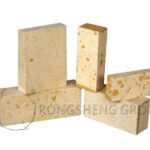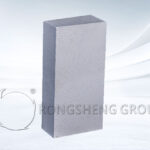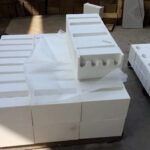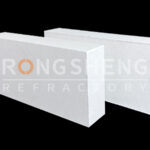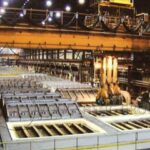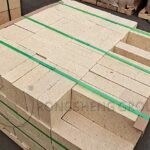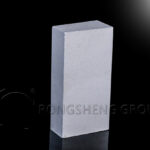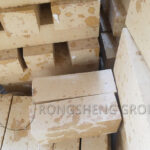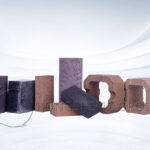Ferroalloy electric furnace refractories consist of three components: roof refractories, wall refractories, and bath refractories (furnace slopes and furnace bottom). During the ferroalloy smelting process, different electric furnace brick refractories operate under different conditions.
The roof refractories are primarily subject to erosion and impact of high-temperature furnace gases and sprayed slag, temperature fluctuations during charging intervals, radiant heat from the high-temperature arc, and airflow impact and pressure fluctuations during charge collapse.
The wall refractories are primarily subject to the high-temperature radiation of the arc and temperature fluctuations during charging intervals. They are also subject to erosion and impact from high-temperature furnace gases and sprayed slag. They are also subject to impact wear from solid and semi-molten materials. They are also subject to severe slag erosion and slag impact near the slag line. Furthermore, they are subject to additional pressure during furnace tilting.
The wall and furnace bottom refractories primarily withstand the pressure of the upper charge or molten iron, temperature fluctuations during charging intervals, charge impact, arc melting damage, and erosion and impact from high-temperature molten iron and slag.
In order to ensure the normal operation of the electric furnace, it is necessary to use refractory materials with high refractoriness and refractoriness under load, good resistance to rapid cooling and heating, good resistance to slag, large heat capacity, and certain thermal conductivity to build the electric furnace lining. electric furnace brick. The performance and usage characteristics of the lining refractory materials commonly used in ferroalloy production are as follows:
01 Clay Bricks
The primary raw material for clay bricks is refractory clay, which exhibits excellent plasticity and bonding strength.
The key performance characteristics of clay bricks include: strong resistance to acidic slag, good resistance to rapid cooling and heating, good thermal insulation, and moderate insulation properties; their refractoriness and refractoriness under load are relatively low. Clay bricks should not be used directly in high-temperature conditions or under special requirements.
In ferroalloy production, clay bricks are primarily used for the exposed walls and linings of submerged arc furnaces, the outer linings of the walls and bottom of furnaces for insulation and insulation, and the inner lining of ladles.
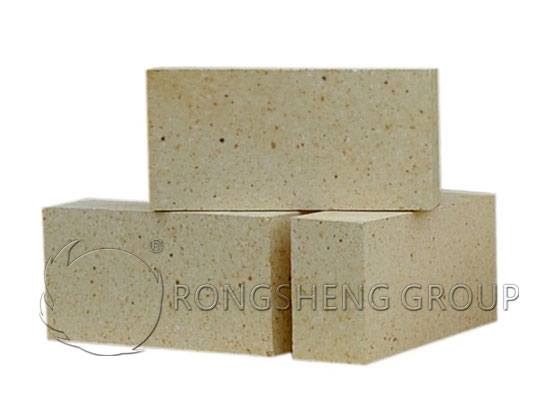
02 High Alumina Bricks
The main raw material for high-alumina bricks is high-alumina bauxite, and the binder is refractory clay.
Compared to clay bricks, the greatest advantages of high-alumina bricks are high refractoriness, high softening resistance under load, good slag resistance, and high mechanical strength. However, their disadvantage is their poor resistance to rapid cooling and heating.
In ferroalloy production, high-alumina bricks can be used for taphole linings in submerged arc furnaces, the roofs of refining electric furnaces, and for lining ladles.

03 Magnesia Bricks and Magnesia Sand
The main raw material for making magnesia bricks is magnesite, and the binder is water, brine, or sulfite pulp waste liquor.
The main performance characteristics of magnesia bricks are: high refractoriness and excellent resistance to alkaline slag, but their thermal conductivity and electrical conductivity at high temperatures are relatively high. They also have a low refractoriness under load and poor resistance to rapid cooling and heating. They pulverize when exposed to water or steam at high temperatures.
In ferroalloy production, magnesia bricks are used to build the walls and floors of high-carbon ferrochrome reduction furnaces, medium- and low-carbon ferrochrome converters, shaking furnaces, and refining furnaces, as well as the lining of ladles holding ferrochrome and medium- and low-carbon ferromanganese. Magnesia-alumina bricks are used instead of magnesia bricks for furnace roofs. Magnesia sand has a high refractoriness and is often used in ferroalloy production to knot furnace floors, build and repair furnace walls and floors, and as a material for plugging holes and making knotted ingot molds.
04 Carbon Bricks
The main raw materials for carbon bricks are crushed coke and anthracite, with coal tar or asphalt as the binder.
Compared to other common refractory materials, carbon bricks offer not only high compressive strength, low thermal expansion coefficient, excellent wear resistance, high refractoriness and refractoriness under load, excellent resistance to rapid cooling and heating, but also exceptional slag resistance. Therefore, carbon bricks can be used as lining materials for submerged arc furnaces for any ferroalloy that is not susceptible to carburization.
However, carbon bricks are highly susceptible to oxidation at high temperatures, and their thermal and electrical conductivity is relatively high. In ferroalloy production, carbon bricks are primarily used to build the walls and bottom of submerged arc furnaces, the areas not exposed to air.

